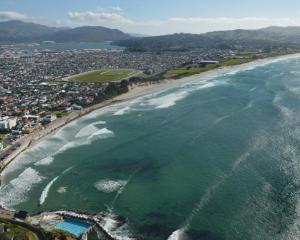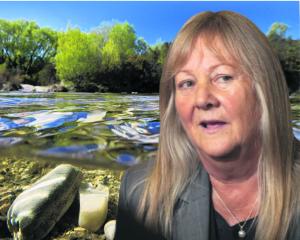Proposed water quality regulations could be the "death knell" of large-scale commercial forestry in Otago, a regional forestry group says.
The proposed rules in water plan 6A, when combined with additional compliance costs, would be a major disincentive to commercial forestry, an Otago Forestry Group spokesman Philip Taylor, managing director of Blakely Pacific, said at the hearing in Dunedin yesterday.
"This is a real risk - not an emotive and non-defendable statement."
The Otago Forestry Group is made up of five forestry companies operating in Otago, representing 60% of the region's plantation forestry or 73,558ha.
The Otago-Southland commercial forestry sector was in 2003 estimated to have directly generated $264 million in real gross domestic product a year, and also provided many recreational and social benefits to the regions, the group said.
Mr Taylor said the Otago Regional Council's approach would mean the controls required to mitigate the land use with the greatest and unsustainable impact would impose an "unreasonable and unsustainable burden" on more sustainable land uses including forestry.
"[It] will also effectively kill of the development of any new commercial plantation forest investment within the region and this will come at a significant cost of lost opportunities, including social, economic and environmental."
On behalf of the group, Kelvin Hunter, Rayonier national environmental officer, said even with good management practices, it was inevitable by the very nature of forestry utilising large machinery and handling large trees on steep terrain that there was going to be some sediment generated.
As forestry was cyclical, there were periods of intense activity around harvesting and then very little for the next 25 to 45 years.
His company had first-hand experience of "literal interpretations" of such rules with some "nasty outcomes".
"The forestry industry has millions of dollars invested in the Otago region.
"The Otago Forestry Group has serious concerns that if arbitrary sediment discharge thresholds are exceeded, then our land use becomes prohibited ... this outcome for our industry imposes significant avoidable cost and in the worst case, provides very little certainty for investors that their investment can be realised."
When asked by Mr Hunter if the group's concerns about their activities becoming prohibited activities were real, hearing panel chairman Duncan Butcher said no.
However, the group suggested alternative rules and policies which would allow forestry activities to be undertaken as a permitted activity incorporating the industry's good practices codes and guidelines based on its significant difference from the intensive agriculture the plan change sought to target.
Consultant senior planner Nick Boyes said the forestry group suggested rules were certainly "better" than 6A as notified and would be an efficient and effective way to manage discharges from forestry activity.
Cr Butcher said as the approach of the plan change was not to identify particular land uses, the panel would need to seek legal advice on whether it could consider the group's proposals.
Niwa scientist Dr John Quinn said production forestry generally resulted in good water quality, although that was compromised to some extent during the two-year harvesting period.
He recommended 5m buffer zones along smaller streams to deal with the short-term negative impacts around harvesting.
"My analysis suggest that the potential for unintended discouragement of forestry as a land use activity in Otago would be avoided by adopting the Horizons One Plan approach ... requiring adherence to a code of practice as the primary tool and monitoring against water quality targets."
Landcare Research senior scientist Dr Christopher Phillips said compared with the rest of New Zealand, the eastern Otago region, where forestry was situated, was not particularly susceptible to erosion.
"Extreme weather may trigger landslides, irrespective of land use."
Sediment yields in Otago forests were among the lowest in the country and were likely to be greatest within two years of harvesting.
"The elevated risk of erosion during the post-harvest phase is more than off-set by the beneficial effects of the forest in reducing erosion during the majority of a forest rotation."
The hearing continues today.
Day 21
Where: Dunedin.
Panel: Councillors Duncan Butcher (chairman), David Shepherd and independent member Clive Geddes.
Proposal: Changes to Otago's water regulations to prevent run-off in rural areas polluting the region's waterways.
Submitters: Environmental Defence Society; Otago Forestry Group Blakely Pacific Ltd, Rayonier NZ Ltd/Matariki Forests, City Forests, Ernslaw One, Wenita Forest Products, Niwa water scientist Dr John Quinn, Landcare Research senior scientist Dr Christopher Phillips, consultant planner Nick Boyes.
Advertisement













